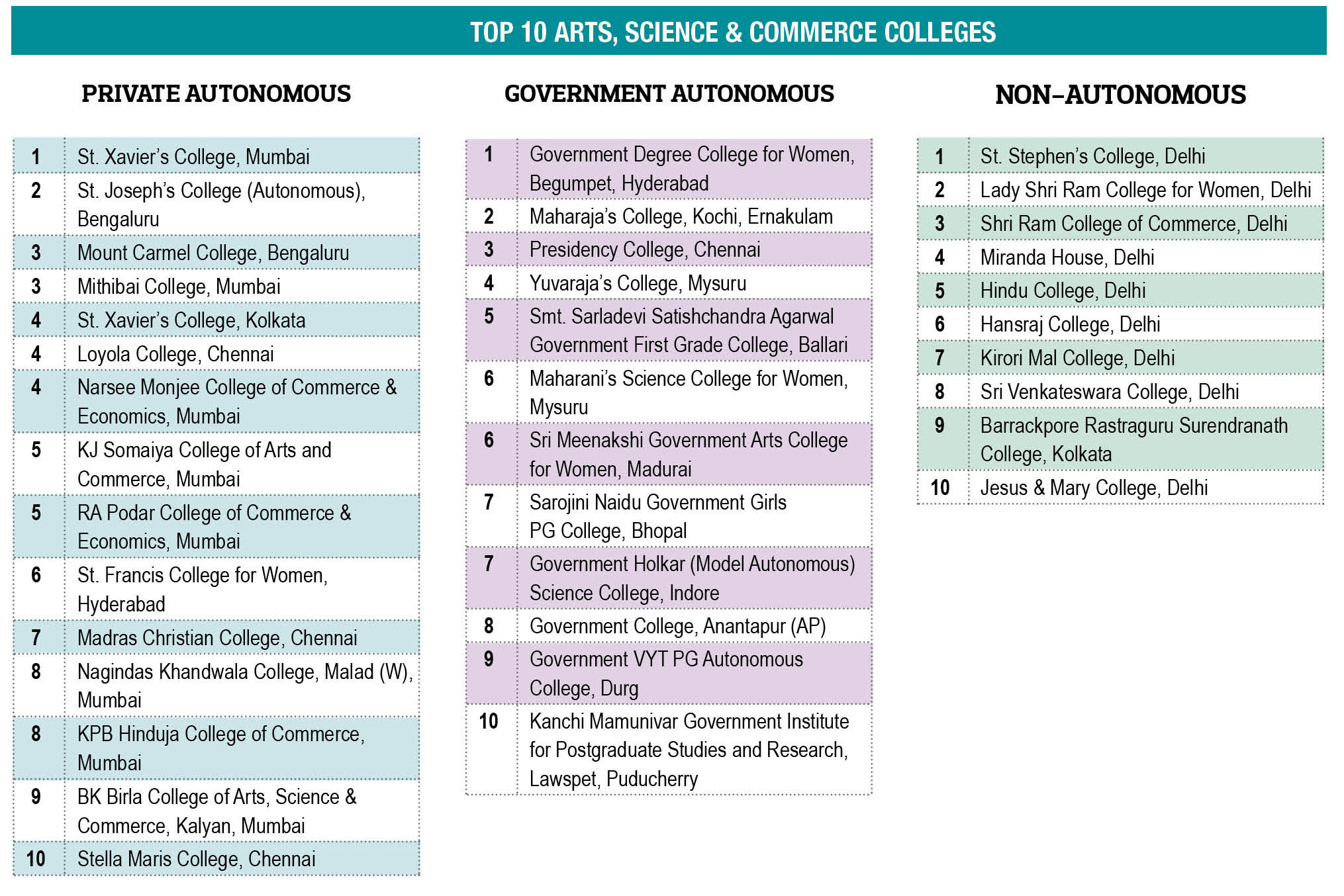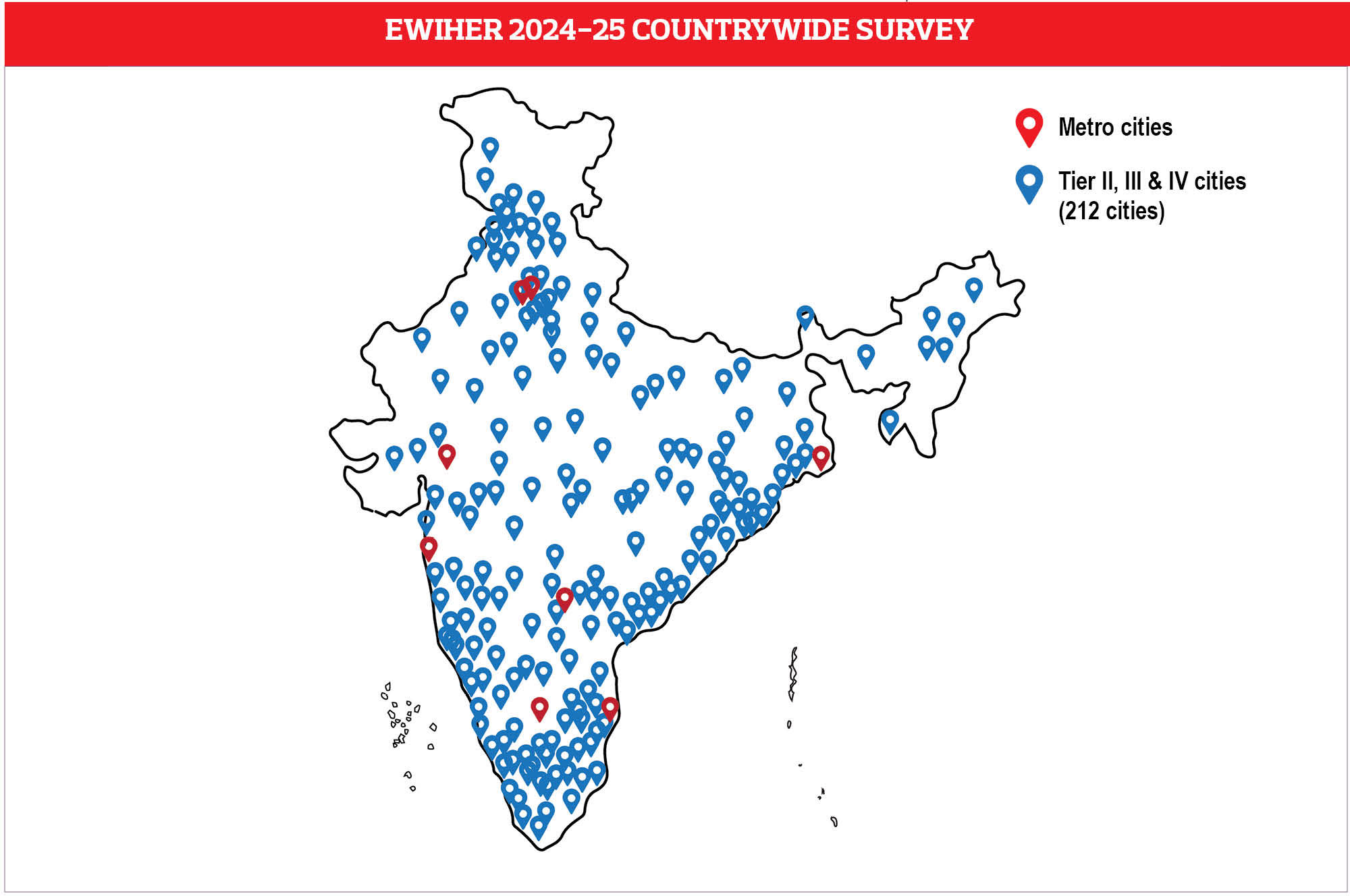The annual EWIHER with its careful categorisation of higher education institutions — to eliminate apples and oranges type comparisons – is the most reliable guide for school-leavers seeking academically and aptitudinally suitable colleges and universities, writes Dilip Thakore

As most corporate leaders will testify, academic standards India’s higher education institutions — especially undergrad arts, science and commerce colleges — are short of expectation. Year after year the country’s 45,473 colleges nonchalantly certify an estimated 10 million graduates as ready for employment in government, industry and business. The majority of them however, are far from job-ready and require extensive and expensive post-induction training before they become productive.
According to State of Working India 2023 report of the Bengaluru-based Azim Premji University, 42 percent of India’s graduates under-25 were unemployed in 2021-22. And this is not because there are no vacancies in industry and business. Quite the contrary. Most captains of India Inc lament the unavailability of sufficiently well-qualified and skilled youth for managerial and shop-floor jobs.
After analysing the job-readiness of 440,000 young graduates in 2,500 campuses across India, in its India Graduate Skills Index, Mercer/Mettl, a New York-based firm with several offices in India that bills itself as the “world’s fastest, largest online assessment and certification company”, reports that 55 percent of college graduates are “not employable”. Consequently choosing the ‘right’ — most academically and aptitudinally suitable — undergrad college is a matter of critical importance for higher secondary school-leavers.
Therefore since 2013, your editors have been publishing the EducationWorld India Higher Education Rankings to make it easier for school-leavers to choose the most appropriate undergrad Arts, Science and Commerce colleges in India. Although media publications and several government agencies notably NAAC (National Assessment and Accreditation Council), a subsidiary of the University Grants Commission (UGC), awards its A-E star ratings to colleges and universities that opt for assessment, NAAC doesn’t — and never did — inspire much confidence. Even though it was established in 1994, thus far only 9,062 colleges and universities have volunteered for NAAC accreditation.
Last year at this time, Bhushan Patwardhan, Chairman of NAAC, resigned in dramatic circumstances citing “malpractices,” “manipulation” and “questionable grades” awarded by NAAC to favoured higher education institutions. This, as we remarked on this page at the time, was hardly novel news for us because over the years NAAC had besmirched its reputation by awarding five star rating to numerous colleges and universities that didn’t deserve even three.
The latest news reported by us last month (see https://www.educationworld.in/delhi-naacs-second-innings/) is that NAAC has scrapped its A-E ratings system in favour of a binary institutional evaluation system of accredited and non-accredited institutions. And within several categories it will award Level 1-5 ratings. Academics are keeping their fingers crossed that the new accreditation system won’t be same old wine in a new bottle.
The other official HEI (higher education institutions) rankings initiative is the education ministry’s NIRF (National Institutional Ranking Framework) introduced in 2015. Although it is often cited by some HEIs as proof of university excellence, ab initio NIRF has attracted criticism for arbitrary and absurd rankings.
Last year while commenting on the EducationWorld India Higher Education Rankings (EWIHER) 2023-24, your editors highlighted the absurdity of the premier private Birla Institute of Technology and Science (BITS) Pilani (estb.1964) being ranked below several unheard of provincial universities in NIRF 2022. Again this year BITS-Pilani, which has several campuses in India and one abroad, is ranked #25 in the NIRF league table of India’s Top 100 engineering HEIs.
Moreover, excellent private engineering HEIs which routinely rank high in the annual EWIHER — Vellore Institute of Technology, IIIT-Hyderabad, Dhirubhai Ambani Institute of Information & Communication Technology, Gandhinagar — don’t feature in the NIRF Top 100, indicating discernible bias in favour of government-promoted HEIs.
Several media publications including India Today also publish annual college and university rankings. But these are essentially politics-oriented publications lacking the specialist education knowledge and focus of EducationWorld. Therefore, it is submitted that the annual EWIHER with its careful categorisation of HEIs — to eliminate apples with oranges type comparisons — is the most reliable guide for school-leavers seeking academically and aptitudinally suitable colleges.
Against this backdrop, we present Part-I edition of EWIHER 2024-25 in which we rate and rank India’s Top 500 Arts, Science, Commerce (ASC) and Engineering colleges. To provide an accurate guide we have carefully categorised ASC colleges into Private and Government autonomous and Top 100 non-autonomous institutions, and have also rated and ranked the Top 100 private engineering colleges countrywide.
These distinctions are important because in general parents/students prefer ASC colleges with academic and administrative autonomy, and less tethered to the apron strings of large parent universities which often affiliate 500-700 colleges. Autonomous colleges empowered to design their own comprehensive syllabuses and curriculums tend to offer higher quality education than non-autonomous ASC colleges which offer standardised affiliating university prescribed syllabuses. It’s noteworthy that autonomous colleges are conferred this status after careful evaluation by the apex-level University Grants Commission. As such they are generally regarded as being a cut above non-autonomous colleges.
However within India’s complex education system, the best colleges are not necessarily autonomous. For instance St. Stephen’s College, Delhi, routinely ranked the country’s #1 non-autonomous ASC college — for mysterious reasons and despite pleading for autonomous status for several years — has not been awarded autonomy. Therefore, school-leavers seeking the most suitable undergrad colleges need to tread carefully.

Misra: easy access and response
Moreover, another distinguishing feature of the annual EWIHER is that for engineering colleges we restrict our league table to the Top 100 private institutions. The rationale for excluding government engineering colleges is that the league table is certain to be dominated by the country’s 23 IITs (Indian Institutes of Technology) and 31 NITs (National Institutes of Technology). Because these Central government engineering colleges provide best quality technology education at heavily subsidised prices, they are the first preference of school-leavers and tediously dominate all engineering college rankings. This consideration apart, although a record 1.2 million school-leavers write the IIT-JEE (joint entrance examination) the annual intake of these 23 institutes is a mere 10,000. And of NITs 7,750.
In the circumstances with a mere 2 percent of the 1.2 million school-leavers who write the annual IIT-JEE admitted into these admittedly excellent engineering institutes, your editors resolved to exclude them — and all government engineering colleges — to provide the next best option: the country’s Top 100 private engineering colleges.
Therefore, this year after our field survey agency, the Gurgaon-based Centre for Forecasting & Research Pvt. Ltd (C fore) in early January announced its intent to conduct its own school, and presumably HEI rankings, we commissioned the Bangalore-based AZ Research Partners Pvt. Ltd to compile the much anticipated EWIHER 2024-25.
In our opinion, AZ Research Partners Pvt. Ltd (estb.2002) has a superior track record in quantitative and qualitative market research. Its clientele includes blue-chip companies such as Tata Hitachi, IndusInd Bank, Mars Chocolates, WPP Group, Pearson Group and significantly, Ashoka, Mahindra and BML Munjal universities, among others.
“For this survey, we constituted a sample base of 2,100, comprising 1,100 students and 800 faculty in higher education institutions and 100 industry leaders in 22 states countrywide. In face-to-face, telephonic and online interviews they were requested to rate ASC colleges they were familiar with on six parameters of higher education excellence devised by EducationWorld viz, competence of faculty, faculty welfare and development, curriculum & pedagogy (digital readiness), placements, infrastructure and facilities and leadership/governance. Engineering colleges were assessed on nine parameters including research and innovation capability and value for money. The interviews with target respondents were conducted over a period of three months by our market research personnel. Thanks to EducationWorld’s excellent reputation built over the past almost 25 years, we didn’t experience any problems of access and response,” says Shubra Misra, promoter-director of AZ Research. An alumna of IIM-Lucknow, Misra is a highly experienced market research and industry professional having served with the pioneer ORG-MARG (now A.C. Nielsen), Blackstone MR (now Synovate) and Tata Global Beverages for an aggregate 25 years before co-promoting AZ Partners two decades ago.
In the pages following we present league tables rating the country’s Top 500 Arts, Science and Commerce private and government (which tend to be omitted from the league tables of other publications) colleges under six parameters of higher education excellence, and also Top 100 private engineering colleges.
League tables rating and ranking India’s pre-eminent private and public universities and private B-schools will be featured in our May issue. Subsequently, the country’s top ranked Higher Education Institutions will be awarded and felicitated in a gala event scheduled to be staged in Delhi in May/June.
























